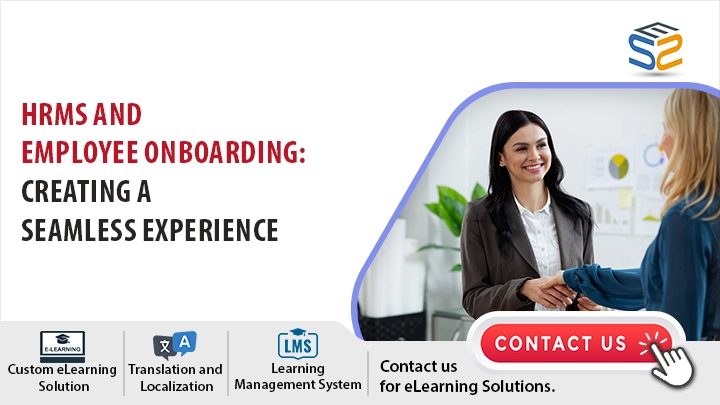Introduction
Employee onboarding is a critical process that sets the tone for an employee’s experience within an organization. A seamless onboarding experience not only improves retention but also boosts productivity and engagement. In this article, we explore how Human Resource Management Systems (HRMS) play a pivotal role in streamlining and enhancing the onboarding journey.
Importance of Seamless Employee Onboarding
Effective onboarding is crucial for integrating new hires into the company culture and ensuring they have the tools and information they need to succeed from day one. A seamless onboarding process reduces stress for new employees, accelerates their time to productivity, and fosters a positive impression of the organization.
Role of HRMS in Employee Onboarding
Centralized Data Management
HRMS platforms centralize employee information, including personal details, payroll information, and benefits. This centralized approach ensures that all relevant data is accessible in one place, facilitating smooth communication and coordination between HR departments and new hires.
Automated Workflows
Automation streamlines repetitive tasks such as document verification, form filling, and approvals during the onboarding process. HRMS automates workflows, sending reminders and notifications to stakeholders, ensuring tasks are completed on time without manual intervention.
Compliance and Documentation
HRMS helps maintain compliance with regulatory requirements by standardizing document management and ensuring all necessary paperwork is completed accurately and on time. This reduces the risk of legal issues and ensures the organization adheres to industry regulations.
Benefits of Using HRMS for Employee Onboarding
Time Efficiency
By automating administrative tasks and centralizing data, HRMS significantly reduces the time required for onboarding. HR teams can focus more on strategic initiatives and employee engagement rather than paperwork and logistics.
Improved Employee Experience
A streamlined onboarding process enhances the employee experience by providing a structured and welcoming introduction to the organization. Clear expectations, timely communication, and access to resources contribute to a positive onboarding experience.
Enhanced Compliance
HRMS ensures that all necessary compliance documents, such as tax forms and employment contracts, are completed correctly and stored securely. This reduces compliance risks and provides a transparent audit trail for regulatory purposes.
Best Practices for Seamless Onboarding with HRMS
Pre-boarding Preparation
Before the new hire’s first day, use HRMS to send welcome emails, provide access to onboarding portals, and outline initial tasks and expectations. Preparing in advance sets a positive tone and minimizes confusion on the first day.
Structured Onboarding Process
Design a structured onboarding plan using HRMS workflows to guide new hires through orientation, training sessions, and team introductions. Ensure that milestones are clearly defined, and progress is tracked to keep the process on track.
Continuous Feedback and Improvement
Gather feedback from new hires about their onboarding experience using HRMS surveys or feedback forms. Use this input to refine and improve the onboarding process continually. Address any gaps or concerns promptly to enhance future onboarding experiences.
Conclusion
HRMS technology plays a crucial role in modernizing and optimizing the employee onboarding process. By leveraging centralized data management, automated workflows, and compliance features, organizations can create a seamless onboarding experience that benefits both employees and employers alike. Implementing best practices ensures that new hires feel welcomed, informed, and ready to contribute from day one. Embrace the power of HRMS to transform your onboarding process and set your organization up for long-term success.
Frequently Asked Questions (FAQs)
Q1. What is HRMS (Human Resource Management System)?
A. HRMS, or Human Resource Management System, is a software solution that integrates various HR functions, including payroll, benefits administration, employee records management, and performance management, into one system.
Q2. How does HRMS enhance employee onboarding?
A. HRMS enhances employee onboarding by automating administrative tasks such as document management, form filling, and approvals. It centralizes employee information, streamlines workflows, and ensures compliance with regulatory requirements, leading to a smoother onboarding experience.
Q3. What are the benefits of using HRMS for employee onboarding?
A. Using HRMS for employee onboarding saves time by automating repetitive tasks, improves the employee experience through structured processes and timely communication, and enhances compliance by ensuring all necessary paperwork is completed accurately and securely stored.
Q4. How can HRMS improve time efficiency during onboarding?
A. HRMS improves time efficiency during onboarding by automating tasks like sending welcome emails, providing access to onboarding portals, and managing training schedules. This allows HR teams to focus more on strategic initiatives and less on administrative tasks.
Q5. What role does automated workflows play in HRMS for onboarding?
A. Automated workflows in HRMS streamline the onboarding process by automating notifications, reminders, and task assignments. They ensure that all stakeholders are informed and tasks are completed on time, reducing delays and improving overall efficiency.
Q6. How can organizations ensure a seamless onboarding experience with HRMS?
A. Organizations can ensure a seamless onboarding experience with HRMS by implementing pre-boarding preparations, designing structured onboarding plans, and continuously gathering feedback to refine and improve the process. HRMS facilitates these practices by providing tools for planning, tracking, and feedback collection.
Q7. What are the compliance benefits of using HRMS for onboarding?
A. HRMS ensures compliance during onboarding by standardizing document management, maintaining accurate records, and facilitating adherence to legal and regulatory requirements. It provides a transparent audit trail and reduces the risk of compliance issues.
Q8. How can HRMS contribute to improving the employee experience during onboarding?
A. HRMS contributes to improving the employee experience during onboarding by providing clear communication, access to resources, and a structured introduction to the organization. It helps new hires feel welcomed, informed, and ready to contribute effectively from their first day.




